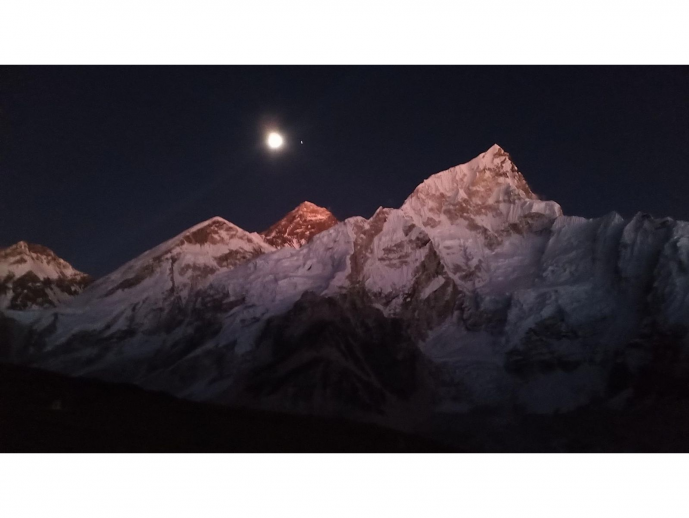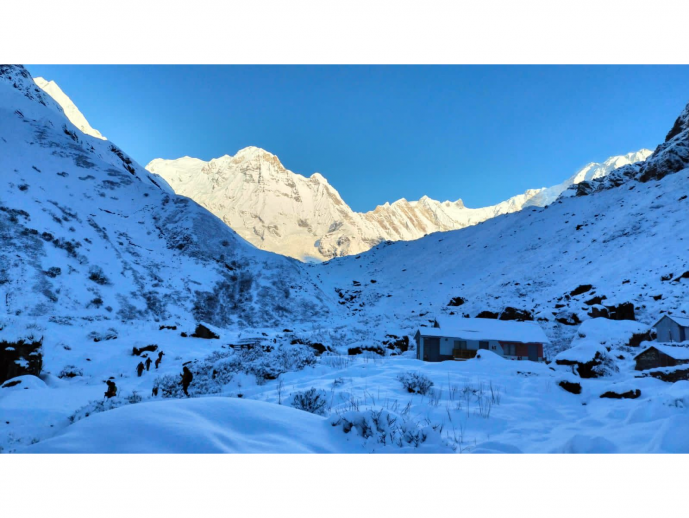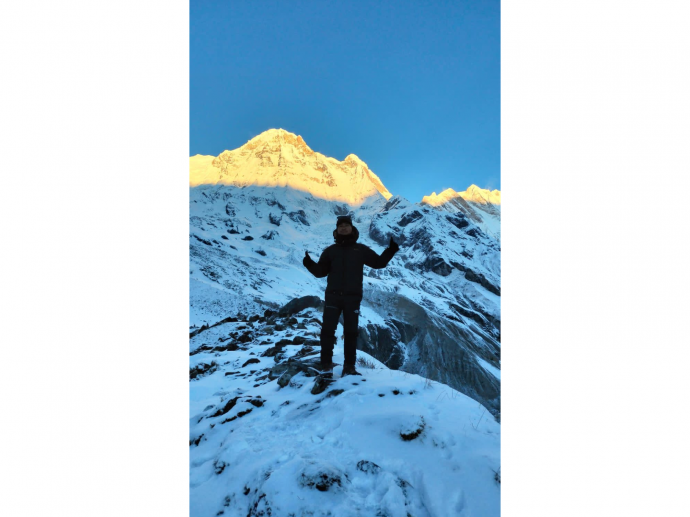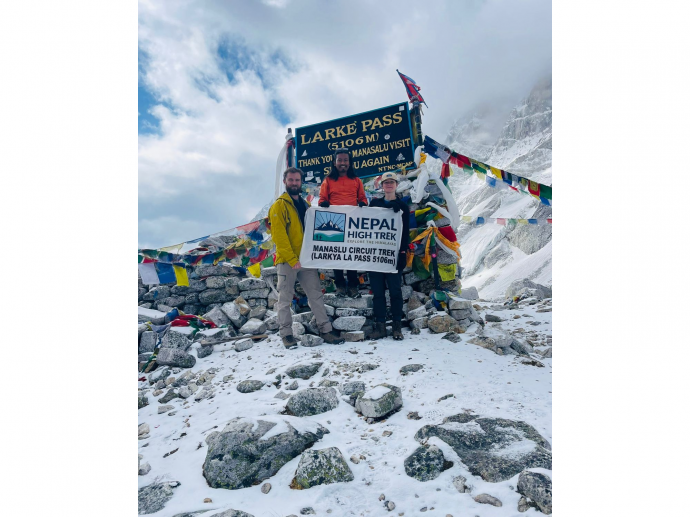Categories more
- Adventures (17)
- Arts / Collectables (15)
- Automotive (37)
- Aviation (11)
- Bath, Body, & Health (77)
- Children (6)
- Cigars / Spirits (32)
- Cuisine (16)
- Design/Architecture (22)
- Electronics (13)
- Entertainment (4)
- Event Planning (5)
- Fashion (46)
- Finance (9)
- Gifts / Misc (6)
- Home Decor (45)
- Jewelry (41)
- Pets (3)
- Philanthropy (1)
- Real Estate (16)
- Services (23)
- Sports / Golf (14)
- Vacation / Travel (60)
- Watches / Pens (15)
- Wines / Vines (24)
- Yachting / Boating (17)
Choosing Your Ultimate Trek in Nepal : Everest Base Camp Trek
Published
09/08/2024Overview: The Everest Base Camp (EBC) trek is one of the most notorious trekking courses in the world. It leads globetrotters through the shocking Khumbu Valley to the base of Mount Everest, the most elevated mountain on soil.
This trek combines breathtaking mountain views, wealthy Sherpa culture, and the challenge of high-altitude trekking, making it a bucket-list for trekkers worldwide.
Quick Insights
Duration: 12–14 days (some of the time assisted to 7–9 days).
Max Height: 5,364 meters at Everest Base Camp.
Difficulty: Direct to Strenuous.
Best Time to Visit: Walk to May and September to November.
Best Time to Visit
The best time to trek to Everest Base Camp is amid the spring (Walk to May) and harvest time (September to November) seasons.
Spring offers clear skies and blossoming rhododendrons, whereas harvest time is known for the steady climate and awesome perceivability of Everest and other towering peaks.
Culture
The trek gives a wealthy social involvement, especially displaying the Sherpa community, who are popular for their mountaineering abilities and one-of-a-kind way of life. Along the course, trekkers pass Buddhist cloisters, stupas, and supplication banners, which reflect the deep-rooted impact of Tibetan Buddhism.
Why Go for This Trek?
- Experience the world’s most elevated mountain, Mount Everest.
- Learn about the Sherpa culture and visit their conventional villages.
- Trek through assorted scenes, from lavish timberlands to high-altitude deserts.
- Reach the famous Everest Base Camp and witness climbers planning for the summit.
Difficulty Level
This trek is considered direct to strenuous due to the tall height and long days of strolling. The chance of elevation affliction is critical, and appropriate acclimatization is pivotal. Trekkers ought to be physically fit and arranged for challenges like tough landscapes and cold temperatures.
Top Attractions
- Everest Base Camp itself.
- Kala Patthar for an all-encompassing view of Mount Everest.
- Tengboche Religious Community, the biggest Buddhist religious community in the Khumbu region.
- Namche Bazaar, a dynamic Sherpa town with shocking views of Everest.
7-Day Annapurna Base Camp Trek
Overview :The 7 days Annapurna Base Camp (ABC) trek is a shorter but similarly fulfilling trek that takes you to the foot of Annapurna I, the 10th most elevated mountain in the world. The trek exhibits different scenes, from terraced farmlands and thick woodlands to elevated glades and high-altitude tundra.
Quick Insights
Duration: 7–12 days (7-day choice for speedier trekkers).
Max Height: 4,130 meters at Annapurna Base Camp.
Difficulty: Moderate.
Best Time to Visit: Walk to May and September to November.
Best Time to Visit
Like the Everest Base Camp trek, the spring and harvest time seasons are the best times to visit Annapurna Base Camp. Spring is especially lovely, with the rhododendron timberlands in full blossom, whereas harvest time offers clear skies and culminates trekking conditions.
Culture
The Annapurna locale is domestic to the Gurung and Magar communities with their particular culture, conventional houses, and warm neighborliness. The town of Ghandruk is a social highlight, where trekkers can learn about neighborhood traditions, visit conventional homes, and appreciate Gurung moves and food.
Why Go for This Trek?
- Shorter length, perfect for those with constrained time.
- Dazzling views of Annapurna I, Machapuchare (Fishtail), and other peaks.
- Walk through a combination of scenes, from subtropical forests to high-altitude glaciers.
- Immerse yourself in the affluent culture of the Gurung and Magar communities.
Difficulty Level
This trek is appraised directly. Whereas it doesn't reach the tall elevations of the Everest locale, the soak climbs and plunges, especially around Chhomrong, can be physically requesting. Be that as it may, elevation affliction is less of a concern compared to Everest Base Camp.
Top Attractions
- Annapurna Base Camp, enveloped by towering snow-capped peaks.
- Machapuchare (Fishtail), a hallowed mountain not allowed to be climbed.
- Machapuchare (Fishtail), a sacrosanct mountain not permitted to be climbed.
- The town of Ghandruk, with its conventional Gurung design and culture.
- Natural hot springs at Jhinu Danda.
Langtang Valley Trek
Overview: The Langtang Valley trek is a less swarmed and quiet trekking encounter, advertising wonderful mountain views, a wealthy social encounter, and shifted scenes. Found fair north of Kathmandu, the Langtang locale is celebrated for its beautiful excellence and the warm neighborliness of the Tamang people.
Quick Insights
Duration: 7–10 days.
Max Height: 4,984 meters at Tserko Ri.
Difficulty: Moderate.
Best Time to Visit: Walk to May and September to November.
Best Time to Visit
The harvest time and spring seasons are perfect for the Langtang Valley trek. In spring, the rhododendron woodlands come lively with dynamic colors, whereas harvest time brings clear skies and fresh mountain views.
Culture
The Tamang individuals, with their Tibetan Buddhist legacy, rule the Langtang locale. The culture is intensely impacted by Tibetan Buddhism, and trekkers can visit Kyanjin Gompa, a critical religious community in the locale. Supplication banners, chortens, and main dividers are common along the trail.
Why Go for This Trek?
- A more inaccessible and serene trekking encounter compared to the more swarmed trails.
- Less commercialized, advertising a closer association with nature and nearby communities.
- Trek through timberlands, snow capped knolls, and frosty moraine landscapes.
- Experience Tamang culture, which is unequivocally affected by Tibetan traditions.
Top Attractions
- Kyanjin Gompa, a centuries-old Buddhist monastery.
- Tserko Ri, a day climb advertising all encompassing views of the Langtang range.
- Langtang Lirung, the most noteworthy top in the Langtang Himal.
- The Langtang Ice Sheet and the excellent Langtang River.
Difficulty Level
The Langtang Valley trek is considered directly in trouble. Whereas not as tall as the Everest or Annapurna treks, it still includes long days of strolling and critical height pick-up. Acclimatization is imperative, particularly for the discretionary climb to Tserko Ri.
Manaslu Circuit Trek
Overview: The Manaslu Circuit trek is a more blocked-off and challenging journey that circles Mount Manaslu, the world’s eighth-highest mountain. This trip offers trekkers the chance to experience untouched scenes, ordinary Tibetan culture, and the encounter of crossing the Larkya La Pass at 5,160 meters.
Quick Insights
Duration: 14–18 days.
Max Height: 5,160 meters at Larkya La Pass.
Difficulty: Strenuous.
Best Time to Visit: Walk to May and September to November.
Best Time to Visit
The best time to do the Manaslu Circuit trek is in the spring and harvest time months when the climate is more steady and the skies are clear. The spring season is especially dynamic with blossoming blossoms, whereas harvest time gives cooler temperatures and great visibility.
Culture
The Manaslu locale is domestic to Tibetan Buddhists, and their impact is apparent in the towns along the path. Trekkers pass through farther Tibetan-influenced towns such as Samagaon and Samdo, where old cloisters, chortens, and main dividers can be found. The conventional Tibetan way of life in these high-altitude towns offers a glimpse into an antiquated way of life.
Why Go for This Trek?
- A more off-the-beaten-path trek, advertising isolation and less trekkers.
- Stunning views of Mount Manaslu and other Himalayan peaks.
- Culturally wealthy, with solid Tibetan impacts in the farther villages.
- Adventure of crossing the Larkya La Pass, a challenging high-altitude pass.
Top Attractions
- Larkya La Pass, a high-altitude pass advertising shocking views.
- Samagaon and Samdo, Tibetan-influenced towns are wealthy in culture.
- Manaslu Base Camp, advertising views of the wonderful Mount Manaslu.
- Budhi Gandaki Valley, known for its sensational scenes and profound gorges.
Difficulty Level
The Manaslu Circuit trek is considered strenuous, basically due to its remoteness and the tall elevation of Larkya La Pass. The path includes long days of trekking, steep risings, and tough territory, requiring trekkers to be physically fit and well-prepared. The trek is more challenging than Everest Base Camp or Annapurna Base Camp but offers unparalleled rewards for experienced trekkers.
FAQS
- What is the maximum altitude reached?
The trek reaches an altitude of about 5,364 meters (17,598 feet) at Everest Base Camp. - What is the Langtang Valley trek?
It’s a trekking route in the Langtang region of Nepal, known for its stunning landscapes, lush forests, and Tibetan-influenced culture. It offers views of several peaks and glaciers. - How difficult is the trek?
The Manaslu Circuit is considered challenging due to its high altitude, rugged terrain, and long trekking days. It requires good physical fitness and acclimatization.
What is the level of difficulty for the trek?
The Annapurna Base Camp Trek is considered to be of moderate difficulty. It involves some steep ascents and descents, but it doesn’t require technical climbing skills. Basic fitness and prior trekking experience are recommended.
Contect to Nepal High Trek
Nepal High Trek And Expedition Pvt. Ltd. is an authentic local trekking company based in Kathmandu, Nepal, specializing in multi-day tours, treks, climbing and other related activities for solo travelers and private groups. You can contact us at info@nepalhightre.com or via WhatsApp at +977-9851142116.


















